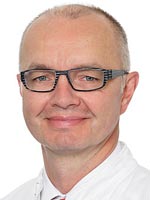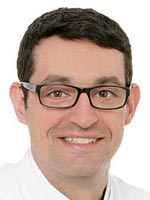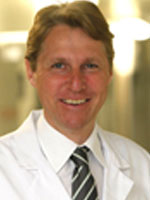The stomach is a curved muscular tube between the esophagus and duodenum, which is located in the left upper abdomen below the diaphragm. It has a capacity of about 1.5 liters and varies from person to person.
The stomach serves as a reservoir for the ingested food. He can store the food for hours, ensuring that we can meet our daily nutritional needs with just a few larger meals. Peristalsis mixes the chyme with the gastric juice, chemically breaks down the food, partially digests it, and then transfers it portionwise into the duodenum.
Our diet and also various physiological circumstances can lead to damage and destruction of the gastric mucosa, the stomach wall and tumors.
Surgery on the stomach fall into the cross-sectional area of the visceral surgery and gastroenterology. Many operations are now performed by endoscope or laparoscopy and thus without a large, open surgery. Both destruction of the stomach, stomach holes, stomach ulcers, and gastric cancer are treated this way. Likewise, the gastric banding (gastric banding operation) or the stomach part removal for the final reduction of the stomach is performed to stop obesity.
Gastrointestinal disorders
Digestion in the stomach can be disturbed by various diseases:
- Heartburn
- Abdominal pain, stomach upset or gastrointestinal infection (gastroenteritis)
- Gastrointestinal or gastrointestinal bleeding from different causes
- Inflammation of the gastric mucosa (gastritis)
- Gastric ulcer (ulcer of the stomach)
- Stomach tumor
- Benign gastric tumors
- Malignant gastric tumors
- Irritable stomach (functional dyspepsia)
Fundoplication
Fundoplication is a surgical procedure to prevent reflux of gastric contents into the esophagus. It can be performed open or endoscopically.
The principle is the formation of a fundal cuff around the abdominal portion of the esophagus. The chyme can still be carried from the esophagus to the stomach. However, the resulting filling of the cuff compresses the abdominal esophagus so that reflux from the stomach into the esophagus is prevented.
Operation according to Nissen-Rosetti
When carrying out the fundoplication according to Nissen and Rosetti, the cuff is completely guided around the esophagus. The front wall of the gastric fundus is loosely guided around behind the esophagus. The loop around the abdominal portion of the esophagus is sutured to the anterior wall of the stomach. In addition, the cuff is secured by sutures on the diaphragm.
Operation after Toupet
In the Toupet fundoplication, the loop is not completely guided around the esophagus. Attachment is made with sutures to the diaphragm and to the anterior wall of the esophagus. Toupet fundoplication should be preferred in the presence of a motility disorder of the esophagus (e.g., in the context of polyneuropathy in diabetes mellitus).
Access
Access is transabdominal. The open procedure or the laparoscopy can be used. Due to the faster convalescence and excellent cosmetic results, laparoscopy should be preferred if possible. However, adhesions after pre-surgery and advanced stages of reflux disease speak against a laparoscopic approach.
Results
In more than 90% of the treated patients, the fundoplication leads to permanent healing of the reflux disease. Especially young patients with recurrent reflux episodes benefit from the surgical procedure. In the long run, fundoplication is more cost-effective in young patients than long-term medication in conservative therapy.
In about 8% of treated patients the fundoplication remains unsuccessful. The cuff does not function properly, obstructs the passage of chyme or does not inhibit reflux.
Even with successful therapy of the reflux feels a part of the patients the side effects (obstruction of emesis, difficulty regurgitation, feeling of fullness in the upper abdomen) as stressful.
Complications
Well-controlled complications such as pneumonia, thrombosis and hematomas occur in up to 15% of patients. Severe complications occur in up to 8% of cases, including:
- Injuries of the stomach, intestines, esophagus and / or diaphragm
- Severe bleeding
- Injury to the vagus nerve
- Slipping the cuff into the chest cavity
The perioperative mortality is 2 to 1000 performed operations. The complication rate is usually smaller in specially targeted centers for surgery.
Pyloroplasty
What is pyloroplasty?
Caution is given to a surgical procedure in which the pylorus controls the gastric emptying muscle, making it easier to operate the contents of the stomach in the duodenal troughs. There are several reasons why caution can be given. The procedure is performed in an operating room with the patient under general anesthesia, and may be open or laparoscopic, depending on the situation. The laparoscopic surgical procedures are becoming increasingly common because the risks to the patient as well as the time of healing, radically reduced, compared to open surgery.
The pyloric muscle creates a tight band of tissue that makes up the pylorus, a valve designed to control gastric emptying. When the muscle thickens the opening narrows, in a condition known as pyloric stenosis. This causes problems with gastric emptying, to be given with caution as the recommended treatment for pyloric stenosis. One of the most common causes is digestive and gastric ulcer disease, to be considered with caution, after other treatments do not work or when patients experience recurring painful reflux.
Another reason to perform a pyloroplasty is a vagotomy. In a vagotomy procedure, a portion of the vagus nerve is used to reduce the production of stomach acid, usually to tackle acid reflux and related problems such as gastric ulcers. However, this can also lead to delayed gastric emptying, which can make the problem worse for the patient. In these cases, pyloroplasty will help empty the stomach efficiently, avoid complications and after a vagotomy. The two procedures are sometimes performed simultaneously.
This procedure can also be performed if there is a mass blocking the gastric outlet and inhibiting its function. Whether benign or otherwise, mass stomach emptying can delay and cause complications for the patient. During pyloroplasty, the mass can also be removed so that it does not continue to grow.
As with all surgeries, surgery to enlarge the stomach can be associated with complications. General anesthesia exposes individuals to a range of risks associated with the used anesthetics, patients who may also be at risk for infections, damage to the stomach or intestine, and other problems that may occur during surgery. Risks to complications can be reduced by working with an experienced surgical team and taking the time to go through anamnesis and potential risks before the procedure takes place.
Gastrectomy
Gastrectomy, the maximal form of gastric resection, is the complete surgical resection of the stomach.
Indications
- Gastric carcinoma (exception is the carcinoma in situ)
- Early gastric carcinoma with diffuse cell type according to Lauren classification (the gastric early carcinoma is curable by radiactal gastrectomy, taking the greater and minor omentum as well as lymphadenectomy)
- Menetriere's disease with increase of atypia
- Malignant neoplasms of the stomach
- MALT lymphoma
- Sarcomas
Gastric resection is the resection of the entire stomach or parts of the stomach.
Depending on the indication, several gradations of a gastric resection are possible. An isolated antral resection is particularly important in conservatively uncontrollable gastric ulcer and its complications.
Other partially resective procedures include Billroth-I resection, Billroth-II resection and Roux-Y reconstruction. These procedures may be used depending on the indication for ulcer and gastric carcinoma. Common to all procedures is a resection of the distal two-thirds of the stomach.
Removal of the entire stomach is referred to as a gastrectomy and is mainly performed in gastric carcinoma in conjunction with a systematic lymphadenectomy and resection of the greater omentum. Only gastric early carcinomas and gastric carcinoma in situ can be successfully treated by one of the partial resection methods mentioned above.
Billroth-I resection
Billroth-I resection is the simplest form of gastric resection. It is due to complications currently (2007) only in exceptional cases or for palliation in the context of advanced tumor disease applied.
The distal 2/3 of the stomach is resected, the gastric stump is anastomosed with the duodenum stump end-to-end or side-to-end (gastroduodenostomy).
The passage of food through the duodenum is thus preserved.
In addition to dumping syndrome as a general complication, Billroth-I resection has intolerably high reflux of bile into the stomach and esophagus. This regularly causes a gastroduodenal ulcer disease and a reflux disease.
Billroth-II resection
Billroth-II resection is a form of gastric resection with unphysiological reconstruction of the food passage.
The distal two thirds of the stomach are deposed, the duodenum stump is closed blind. An isoperistaltic jejunum loop is pulled up and anastomosed to the stomach (gastrojejunostomy).
The jejunum segment may be antecolated (in front of the transverse colon) or retrocolically (by slicing the mesocolon). In order to facilitate the outflow of the duodenal secretion from the blind closed duodenal stump and to prevent its reflux into the resected stomach, another anastomosis is made at the base of the arch formed by the jejunal loop. This is called Braun-Fußpunktanastomose.
Compared to Billroth-I resection, fewer ulcers occur in a Billroth-II resection. However, loop syndromes and dumping syndromes continue to be common. Compared to Roux-Y reconstruction, Billroth-II resections have a higher risk of ulceration of the anastomotic region and gastric cancers in the gastric stump. The Billroth-II resection is therefore rarely used.
Procedure during the operation
Under general anesthesia, the stomach and its supplying blood vessels are visualized via a median laparotomy. The stomach is subsequently deposed to the esophagus and duodenum. As part of the curative approach, lymphadenectomy of the lymph node compartments I and II takes place. In compartment I, all lymph nodes along the vessels directly adjacent to the stomach, ie along the curvatures, belong to the pylorus and to the gastric cardia. Compartment II is formed by lymph nodes in the area of the pancreatic head, duodenum, and the trunk-like vessels of the celiac trunk.
If greater radicality of the procedure is required, lymph nodes of compartment III are resected. These are the retroperitoneal lymph nodes in front of and behind the pancreas, reaching to the left side of the renal pole, cranialward, with the transport of para-aortic lymph nodes.
The passage is restored by Roux-Y reconstruction or, alternatively, by esophageal-jejunal interposition. The reservoir function of the stomach can be partially restored by forming a pouch of jejunum.
Consequences
Insomnia and / or stenosis of the anastomoses, particularly the esophageal and jejunal anastomosis, may result from gastrectomy. Furthermore, dumping syndromes and loop syndromes of varying degrees are potential complications.
In addition, after a gastrectomy, patients are no longer capable of producing hydrochloric acid and intrinsic factor. Therefore, cobalamin has to be substituted. In addition, pancreatic enzymes are taken orally to replace digestive enzymes.
Gastroenterostomy
Gastroenterostomy is the operative connection of the stomach and small intestine.
Indication
In tumors of the stomach, duodenum, pancreas or inflammatory change, which cause an unrecoverable passage disturbance between the stomach and the small intestine.
Execution
Operatively, a bypass is established between the stomach and the small intestine. The jejunum is sewn to the side of the stomach. In this case, the Engestelle is not resected, but it is made a connection between the uppermost jejunum loop and the stomach. The food is led past the pylorus and duodenum.
The procedure is carried out in the slightly overextended supine position. During surgery, general anesthesia is assisted by a peridural catheter for better pain management. The surgery can be laparoscopic or minimally invasive.
Risks
Among the risks of the operation include u.a. Anastomotic leakage, bleeding, inflammation and peritonitis.
Roux-Y reconstruction
Roux-Y reconstruction is a surgical procedure to restore the continuity of the digestive tract after gastric resection or gastrectomy.
The stomach is partially or completely discontinued. The resulting duodenum stump is blinded morally. An isoperistaltic piece of jejunum is pulled up to the stump of the stomach or, in the case of complete resection of the esophagus.
The jejunum is anastomosed with the stomach (gastrojejunostomy) or with the esophagus (esophagojejunostomy). The duodenum stump is anastomosed at its free end end-to-side with the raised jejunum loop (Y anastomosis). The anastomosis reminds of the visual aspect of the shape of a Y. The distance between the upper and lower anastomosis should not be less than 30-40 cm.
Roux-Y reconstruction is the most common reconstruction method after gastric resection. It effectively prevents the return of bile and thus prevents the development of ventricular ulceration of a carcinoma in the anastomosis.
As a complication, there may be a dumping syndrome and, as a result of the surgical technique, inadequacies and / or stenoses of the anastomotic regions.
What happens after the operation?
The initial care after the operation is done in the intensive care unit. In stable conditions, the patient can be transferred to the department. The patients can drink again relatively quickly. Depending on the course of a contrast agent X-ray is performed to check the tightness of the seams. Thereafter, the food composition is gradually prescribed. While still in hospital, patients are informed that they need to take several smaller meals a day in order to absorb the necessary calories and nutrients.
The drains usually inserted during the operation are observed during the first days. Depending on the flow rate, they can eventually be removed.
After removal of the spleen, a vaccination against pneumococcal infection is performed. The removal of the gallbladder has no further consequences. Before leaving, patients receive nutritional advice so they can better assess how they should behave at home.
How do you have to behave at home?
After a gastric resection, you will be incapacitated for between 2 and 4 weeks, depending on whether the operation was open or laparoscopic. The skin sutures or skin clips can be removed in 12-14 days. The primary follow-up check is scheduled at the family doctor. Surgical follow-up is useful in about 6 weeks after surgery.
What does the long-term course look like?
Even after timely diagnosis of gastric carcinoma with the ability to leave the upper stomach resp. despite the construction of a replacement stomach, late problems can occur. Since the storage capacity of the rest resp. Replacement stomach is very low, the food can no longer be stored and digested in the usual amount over several hours. Instead, the food often "plops" too fast into the small intestine.
The early dumping syndrome occurs 5-30 minutes after eating. The large quantities of chyme, which suddenly enter the small intestine, lead to an elongation of the upper small intestine. In addition, a lot of fluid must be mobilized immediately for digestion, so that more water flows from the bloodstream into the small intestine. This strengthens, on the one hand, the expansion of the intestine, on the other hand, the circulating blood volume decreases rapidly. The patient becomes pale, begins to sweat and complains of nausea. At the same time the blood pressure drops and it can lead to circulatory collapse.
The late dulling syndrome occurs 1-4 hours after the meal. The cause is low blood sugar as a result of too rapid a transfer of the sugar contained in the food into the blood. The resulting hypoglycaemia is counteracted by insulin secretion into the blood so strongly that it can eventually lead to low blood sugar. Low blood sugar (hypoglycaemia) is manifested by feelings of weakness and sweating; in bad cases, unconsciousness occurs.
Food intolerances vary greatly from patient to patient. Accordingly, it is difficult to instruct the affected patients on a particular nutritional scheme. It is important for every patient to find out the foods that are good for him. He may have to leave others out for a while. Here, a later dietary advice may be useful.
After gastric resection, resp. Gastrectomy lacks the intrinsic factor responsible for the uptake of vitamin B12 in the lower small intestine. As a result, patients usually need to receive vitamin B12 injections every three months. Otherwise anemia (anemia) threatens, which can cause further problems.


































 Loading ...
Loading ...


